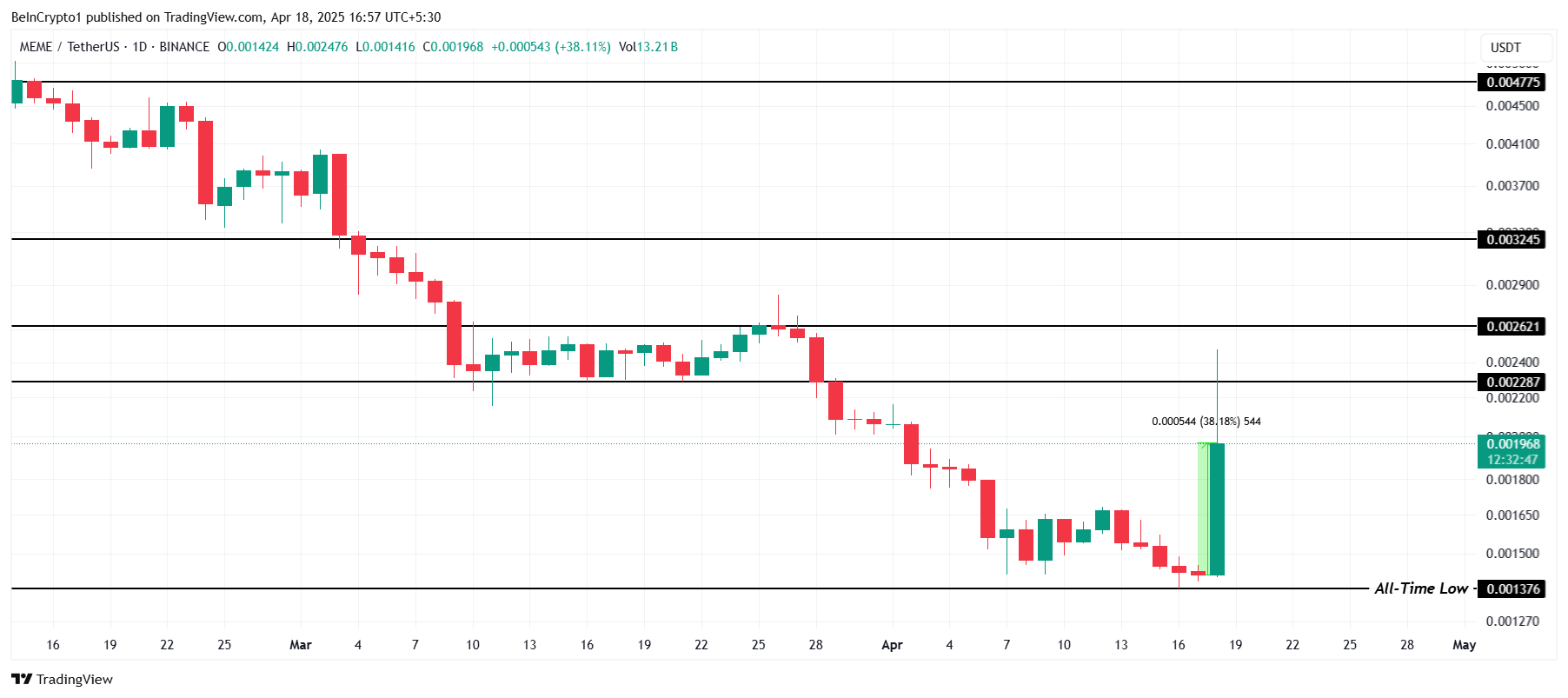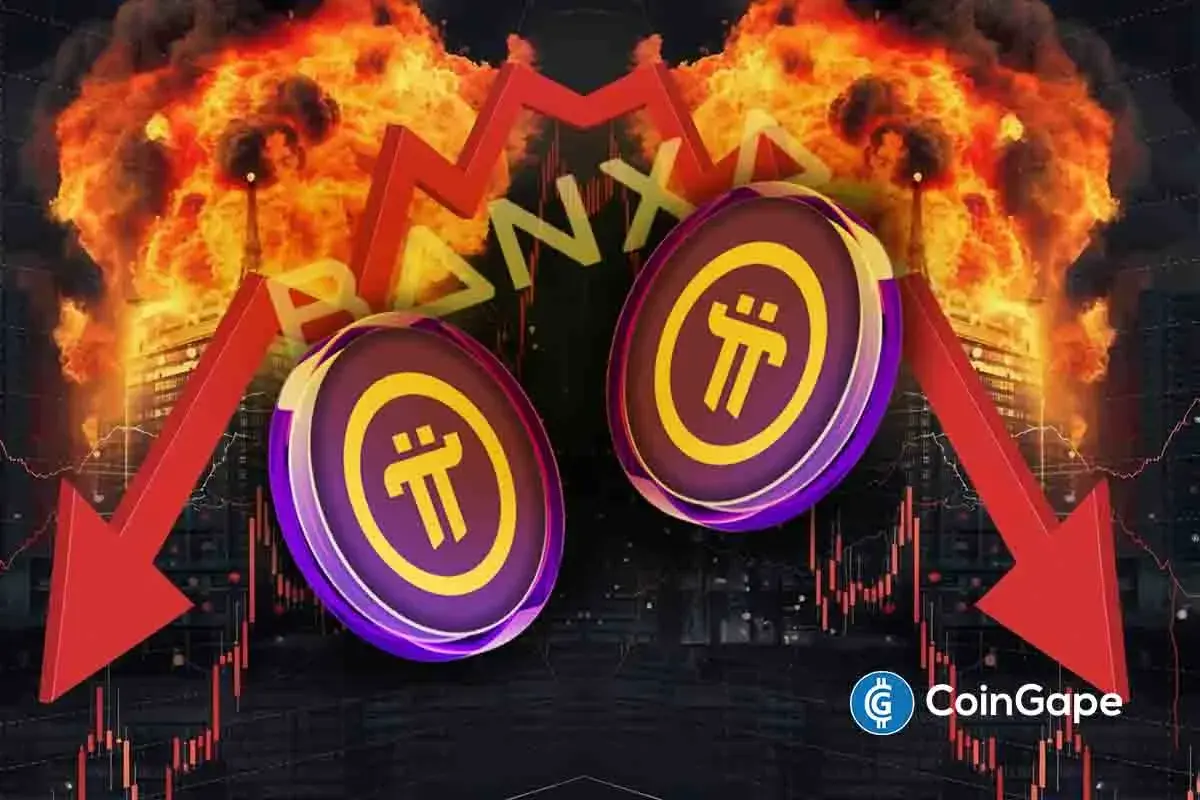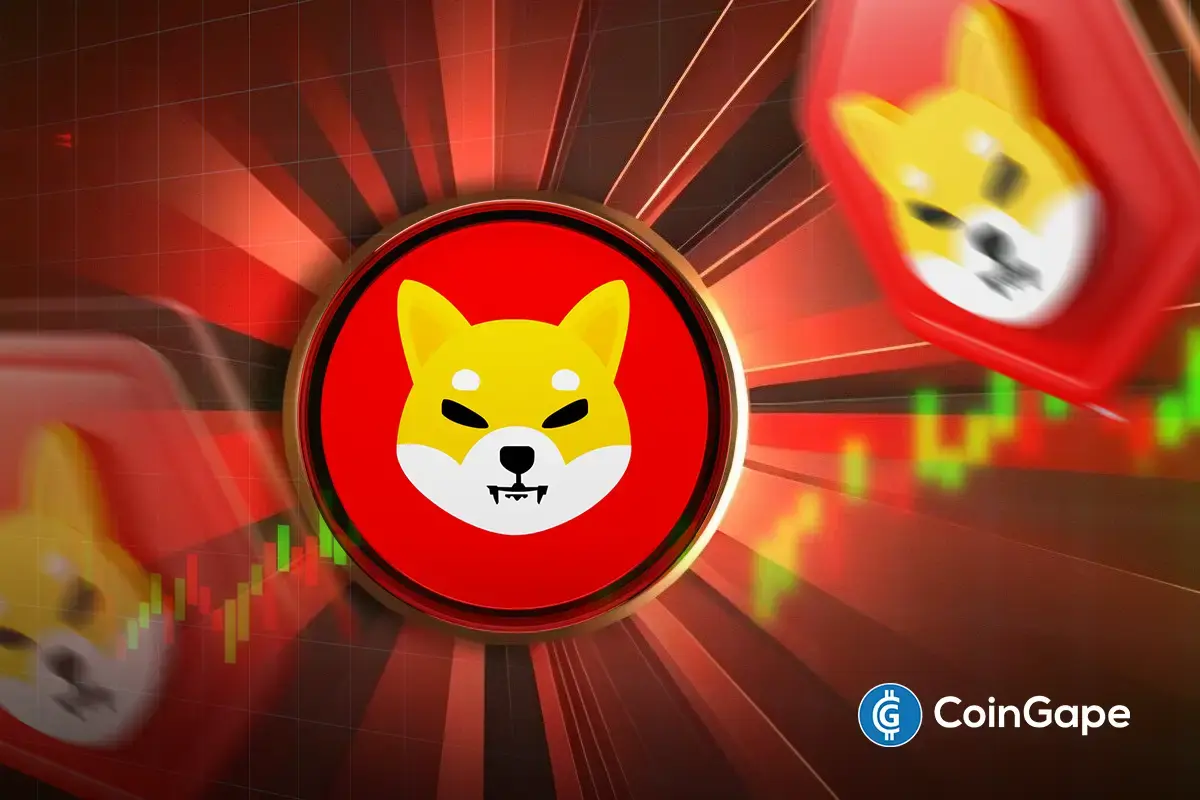Market
CertiK Expert Discusses Surge in Social Engineering Crypto Scams

The state of security across the crypto and blockchain space has changed significantly in the past few months. Traditional smart contracts exploited or brute force attacks on blockchain networks are being superseded by crypto scams like rug pulls and pump-and-dump schemes.
BeInCrypto spoke with a spokesperson from security firm CertiK to understand how blockchain and security threats are evolving and how projects and users can safeguard against future exploits.
Over the past few months, the crypto community has seen a rise in social media-related hacks. This increasingly common tendency has pivoted away from the orchestration of more sophisticated blockchain attacks that have traditionally plagued headlines.
Whereas smart contract exploits or blockchain hacks require more knowledge, hackers have found an easier avenue by targeting social media accounts instead.
“Social media accounts have become attractive targets due to their broad reach and the trust followers place in verified profiles. Compared to complex blockchain attacks, hijacking a social media account offers a quicker, less technically demanding way to spread scams to a massive audience. The growing frequency of such breaches suggests hackers are focusing more on social engineering and credential theft over direct blockchain exploitation,” a CertiK spokesperson told BeInCrypto.
The accessibility of social media hacking has, in turn, expanded the pool of malicious actors capable of these attacks.
“This trend may also be due to, in part, a skills gap among malicious actors. For instance, drainer-as-a-service has opened doors to scammers who don’t necessarily understand how to manipulate smart contracts. Many of these scammers are from the younger generation, which means they are more likely to speak about their financial pursuits online, which fuels more users attempting to use social media for malicious purposes,” the spokesperson added.
X (formerly Twitter) has quickly become the social media platform of choice among Web3 hackers.
After US President Donald Trump launched his meme coin only two days before assuming office, hackers began to take advantage of the hype to hack high-profile X accounts and convince followers to invest in scam meme coins.
Last month, anonymous hackers took over the X account of the former Malaysian Prime Minister Mahathir Mohamad to promote MALAYSIA, a fake meme coin promoted as the country’s official cryptocurrency.
The post was removed within an hour, but the damage was done. Analysis shows that these hackers were probably related to the infamous Russian Evil Corp and that they stole $1.7 million in this rug pull.
“Given that X is the most popular crypto social media application, it makes sense that popular accounts on the platform have been targeted to attract the most victims,” Certik spokesperson said.
The MALAYSIA token scam happened only two weeks after hackers exploited former Brazilian President Jair Bolsonaro’s social media account. In that instance, scammers promoted the BRAZIL token, which rose over 10,000% in minutes, netting the scammers over $1.3 million.
These scams have also affected technological companies.
Attacks on Tech Companies
In December, AI research and development company Anthropic also saw its X account hacked. A fraudulent post claimed that a fake token called CLAUDE would incentivize AI and crypto projects and included a wallet address for investors.
Attackers managed to collect around $100,000 from speculative investors.
“The trend is real and concerning. The breaches of accounts belonging to global leaders and tech companies highlight how threat actors are targeting platforms with wide-reaching influence, using them to amplify fraudulent crypto schemes. It reflects a shift in tactics where social media is becoming a primary vector for crypto-related scams,” the CertiK spokesperson told BeInCrypto.
These situations also highlight a broader issue of weak account security on social media platforms. As a result, even prominent individuals are susceptible to security breaches that directly affect the crypto community.
TRUMP Meme Coin Launch Was a Catalyst For Crypto Scams
After the launch of TRUMP, the frequency of socially engineered scams has become more apparent. In January, Ethereum co-founder Vitalik Buterin published a cathartic social media post criticizing TRUMP and meme coins.
“Now is the time to talk about the fact that large-scale political coins cross a further line: they are not just sources of fun, whose harm is at most contained to mistakes made by voluntary participants, they are vehicles for unlimited political bribery, including from foreign nation states,” Buterin claimed.
Buterin highlighted the tokens’ role in enabling scams and political corruption in crypto and blamed a regulatory loophole former SEC Chair Gary Gensler created for allowing bad actors to exploit governance tokens.
However, these crypto scams extend beyond political themes.
Growth of Social Engineering Exploits
A week after Buterin cautioned against political meme coins, a Coinbase user lost $11.5 million after falling victim to a social engineering scam on Base.
Crypto sleuth ZackXBT uncovered the exploit, pointing out that this incident is part of a growing trend, with multiple Coinbase users suffering similar losses. He also estimates that crypto scams of this nature have drained at least $150 million from Coinbase customers.
“Coinbase has a serious fraud problem. I just uncovered many more recent thefts from Coinbase users. The $150 million stolen from Coinbase users in a year is just from thefts I independently confirmed. So it’s more than likely multiples of this number,” ZachXBT stated.
In social engineering scams, attackers use phishing emails, spoofed calls, and other deceptive tactics to trick victims into revealing private keys or login credentials. Once they gain access, they drain wallets, move funds, and take control of accounts.
For CertiK, these situations stipulate the need for stronger security measures.
“Web3 security platforms are adapting by expanding their focus beyond smart contract vulnerabilities to include broader threat detection, particularly around social engineering risks. Many are integrating AI-driven monitoring tools to flag unusual account activity, especially on social media, and are educating users about the dangers of impersonation scams. The evolving threat landscape has prompted a more holistic approach to security, blending traditional blockchain defenses with social platform safeguards,” the spokesperson said.
Addressing these security challenges is crucial as new crypto projects increase exponentially.
Prioritizing Proactive Security in a Rapidly Growing Industry
The Web3 sector is experiencing consistent growth, marked by a surge in new crypto project launches. This innovative momentum is expected to continue, but it’s also fueling security concerns.
Notably, the increasing rate of scams and hacks in the first three months of 2025 makes it clear that security efforts are struggling to keep up with innovation.
A study by Precedence Research estimates the Web 3.0 market will expand from USD 4.62 billion in 2025 to approximately USD 99.75 billion by 2034, with a projected compound annual growth rate (CAGR) of 41.18% during that period.

Yet, CertiK believes that project developers are pushing security considerations toward the end of the priority list.
“Despite the surge in new projects, adherence to proper audit protocols remains inconsistent. While some projects prioritize thorough smart contract audits, others rush to the market, sidelining security to capitalize on market trends in an attempt to generate rapid profits,” said the CertiK spokesperson.
Understandably, the considerable rise in Web3 projects makes it more difficult for security firms to keep up with the pace and width of demand.
“Although there is growing awareness around the importance of audits, the pace of new launches often outstrips the capacity of security firms, leading to such gaps. Consequently, many projects are vulnerable to exploits, highlighting the need for more standardized auditing requirements across the space,” the spokesperson concluded.
As the Web3 ecosystem evolves, a proactive and adaptive security approach is critical. Prioritizing both blockchain integrity and social media vigilance will be essential for safeguarding the growing Web3 ecosystem.
The battle against these exploits requires a future where security is not an afterthought but a foundational pillar of every Web3 project and user interaction.
Disclaimer
Following the Trust Project guidelines, this feature article presents opinions and perspectives from industry experts or individuals. BeInCrypto is dedicated to transparent reporting, but the views expressed in this article do not necessarily reflect those of BeInCrypto or its staff. Readers should verify information independently and consult with a professional before making decisions based on this content. Please note that our Terms and Conditions, Privacy Policy, and Disclaimers have been updated.
Market
Solana (SOL) Price Rises 13% But Fails to Break $136 Resistance

Solana (SOL) has climbed 13% over the past seven days, showcasing strong short-term performance. While momentum indicators like the RSI and EMA lines remain supportive, recent price action suggests that bullish strength may be stalling just below a key breakout point.
At the same time, the sharp drop in BBTrend indicates weakening trend strength and fading volatility, often a sign of incoming consolidation or market indecision. With technicals at a crossroads, SOL’s next move will likely depend on whether buyers can regain control or if a broader pullback begins to unfold.
SOL RSI Rises Sharply, but Pause in Momentum Signals Caution
Solana’s Relative Strength Index (RSI) is currently at 60.35, marking a noticeable rise from 45 just two days ago.
This jump signals growing bullish momentum, although the RSI has remained stable since yesterday, suggesting that upward pressure may be easing for now.
The increase reflects renewed buying interest in recent sessions, pushing SOL closer to overbought territory but not quite there yet. This leveling off could indicate that the market is taking a breather before deciding its next move.

The RSI is a momentum oscillator that measures the speed and magnitude of price movements, ranging from 0 to 100. Values above 70 typically indicate that an asset is overbought and may be due for a pullback, while readings below 30 suggest oversold conditions, potentially signaling a buying opportunity.
With Solana’s RSI at 60.35, the asset is approaching bullish territory but hasn’t yet entered an extreme zone.
This positioning suggests that while recent momentum is positive, SOL could face some short-term consolidation or resistance before continuing higher—unless strong buying interest resumes and pushes the RSI closer to overbought levels.
SOL Trend Strength Weakens as BBTrend Falls Below 6
Solana’s BBTrend indicator is currently at 5.69, a significant drop from the 17.5 reading observed just four days ago.
This sharp decline suggests that volatility around SOL’s price has cooled notably, and the strength of the prior trend is weakening.
While BBTrend doesn’t signal direction on its own, the drop indicates that the strong movement, likely bullish, has lost momentum, and SOL may be entering a phase of consolidation or uncertainty.

BBTrend, short for Bollinger Band Trend, measures the strength of a price trend based on the expansion or contraction of Bollinger Bands.
Higher values suggest a strong, directional move (either up or down), while lower values point to weaker trends and reduced volatility. With BBTrend now at 5.69, Solana is in a much less volatile environment, which often precedes a breakout or a reversal.
For now, this reading signals that the recent momentum is fading. Unless volatility picks up again, SOL’s price may remain range-bound in the short term.
Golden Cross Looms for SOL, But $136 Barrier Still Holding Strong
Solana’s EMA lines continue to reflect a bullish structure, with the short-term average trending above the long-term one—suggesting that positive momentum remains intact.
A potential golden cross is also forming, which, if confirmed, would further reinforce the bullish outlook.
However, despite this favorable setup, Solana price has struggled to break through the $136 resistance level over the past few days, indicating that buyers may be losing steam at this key threshold.
Tracy Jin, COO of MEXC told BeInCrypto:
“Amid widespread volatility, Solana has stood out with notable strength. A combination of favorable technical setups and institutional tailwinds — such as the launch of the first spot Solana ETFs in North America — has helped drive a short-term rally. The token’s reclaim of leadership in decentralized exchange activity and rising total value locked further support the bullish case.”

If SOL manages to push above $136 with strong volume, it could open the path toward the next targets at $147 and potentially higher. But if the current momentum fades and the price reverses, a test of support at $124 becomes likely.
About Solana next moves, Jin told BeInCrypto:
“Despite recent gains, SOL’s near-term outlook remains sensitive to broader liquidity conditions. Any deterioration in market confidence — whether from macro shocks or renewed volatility in Bitcoin — could cap upside potential.”
A breakdown below that could accelerate losses toward $112, and in the event of a deeper correction, SOL could even revisit the $95 region.
Disclaimer
In line with the Trust Project guidelines, this price analysis article is for informational purposes only and should not be considered financial or investment advice. BeInCrypto is committed to accurate, unbiased reporting, but market conditions are subject to change without notice. Always conduct your own research and consult with a professional before making any financial decisions. Please note that our Terms and Conditions, Privacy Policy, and Disclaimers have been updated.
Market
Pi Network Roadmap Frustrates Users Over Missing Timeline

Pi Network released its Mainnet Migration Roadmap today. The roadmap lays out a three‑phase plan to move tens of millions of Pioneers who are still waiting to be moved to the open network. It also introduces new rewards, such as referral bonuses.
However, unlike most project roadmaps, Pi network didn’t provide any estimated date or timeline. This lack of clarification has frustrated early adopters who still await key rewards and clarity on rollout pacing.
Pi Network’s Three‑Phase Migration Plan
According to the roadmap, Pi Network will first complete initial migrations for Pioneers already in the queue. This batch covers verified base mining rewards, Security Circle contributions, lockup commitments, utility‑app usage rewards, and confirmed Node rewards for some operators.
After clearing the first wave, the team will tackle second migrations, adding all referral mining bonuses linked to KYC‑verified team members. Pi says these referral rewards will follow once the current queue finishes.
Finally, the network will move into ongoing periodic migrations—potentially monthly or quarterly—to process any remaining bonuses and rewards.
The cadence “is to be determined,” the roadmap notes.
Community Concerns and Critical Gaps
A thorough observation reveals several gaps and potential concerns in the roadmap.
For one, the plan never discloses how many Pioneers remain in the queue or the network’s daily migration capacity. Without those figures, users can’t predict when their own migration will occur.
Node operators report that some “confirmed Node rewards” have landed, but criteria for qualification remain opaque. Early node runners worry they may miss out without clear benchmarks.
Many Pioneers say they have tapped their claim buttons daily since migration opened yet still lack basic mining rewards. They question whether those base rewards and deferred referral bonuses will ever arrive in phase two.
Also, the roadmap admits the UI’s “Transferable Balance” underestimates actual migrated amounts to save resources. Users fear this pessimistic display could erode trust if their true balances remain hidden.
“I thought we were mining all of these PI coins this whole time? I thought the security circles were the Consensus Mechanism. It kinda seems to me like there isn’t a blockchain, and never was one. What kind of “Blockchain protocol” would “Require” all tokens to be minted at genesis?” one community member wrote.
Crucially, Pi offers no audit or error‑resolution process for users who spot mismatches in their historical mining data.
Given six years of complex records, occasional disputes seem inevitable, but the roadmap remains silent on redress.
All migrations hinge on KYC completion, yet the team omits any scaling targets or timelines for identity verification. A bottleneck here could stall every subsequent phase.
The schedule also ignores how major token unlock events—such as the roughly 108.9 million PI tokens due to release this month—will align with migration waves.

Finally, some Pioneers challenge the project’s foundational narrative. They note that Pi’s statement “all tokens were minted at genesis” contradicts six years of “mining.”
This raises doubts about whether Pi ever operated on a true blockchain protocol.
In the past month, PI price has dipped by over 45%. To sustain momentum and community trust, the team must now supply concrete timelines, transparent criteria, and clear audit paths for its Mainnet migration.
Disclaimer
In adherence to the Trust Project guidelines, BeInCrypto is committed to unbiased, transparent reporting. This news article aims to provide accurate, timely information. However, readers are advised to verify facts independently and consult with a professional before making any decisions based on this content. Please note that our Terms and Conditions, Privacy Policy, and Disclaimers have been updated.
Market
MEME Rallies 73%, BONE Follows

The meme coin market is experiencing a surge in investor interest, helping certain tokens recover from their all-time lows (ATLs). Memecoin (MEME) is one such token that has avoided a new ATL and also posted a significant 73% rise.
BeInCrypto has analyzed two other meme coins that have performed well over the past day, making them important tokens to watch.
Memecoin (MEME)
- Launch Date – November 2023
- Total Circulating Supply – 43.11 Billion MEME
- Maximum Supply – 69 Billion MEME
- Fully Diluted Valuation (FDV) – $135.37 Million
MEME had a rough week, hitting a new all-time low at $0.00137. However, the altcoin rebounded sharply, rising by 38% in the last 24 hours to trade at $0.00196. This surge marks a significant recovery, driven by renewed interest in meme coins.
The recent surge in MEME’s price was fueled by a sudden spike in interest for joke tokens, driving a 73% intraday high. To maintain its gains, MEME must successfully breach and flip the $0.00228 resistance into support, a critical level for sustaining its upward momentum.

If MEME experiences profit-taking from investors, it could reverse course and drop back down to the all-time low of $0.00137. A decline through this level would invalidate the bullish outlook and signal further challenges for the meme coin.
Bone ShibaSwap (BONE)
- Launch Date – July 2021
- Total Circulating Supply – 249.89 Million BONE
- Maximum Supply – 250 Million BONE
- Fully Diluted Valuation (FDV) – $71.67 Million
BONE posted an impressive 18.5% rise over the last 24 hours, trading at $0.285. The altcoin is currently under the key resistance of $0.295. Given the recent momentum, it seems poised to breach this level, signaling a potential upward trajectory for the token in the near future.
Flipping the $0.295 resistance into support would open the door for BONE to target its next major resistance at $0.348. A sustained push above this level could drive further bullish sentiment, propelling the token toward even higher price levels.

However, if BONE fails to breach $0.295, the bullish momentum could fade. A decline from this point could send the meme coin back towards $0.232, invalidating the optimistic outlook. Such a reversal would likely create caution among investors, delaying potential upward movement.
- Launch Date – April 2024
- Total Circulating Supply – 999.96 Million BAN
- Maximum Supply – 1 Billion BAN
- Fully Diluted Valuation (FDV) – $40.54 Million
BAN, a small-cap token, has caught the attention of investors, rising nearly 25% in the last 24 hours to trade at $0.040. This surge highlights the growing interest in the meme coin market, with BAN standing out despite its smaller market capitalization.
Inspired by the infamous banana taped to a wall, BAN gained significant fame after being purchased by Tron’s founder, Justin Sun, for $6.2 million last year. If the token continues its upward momentum, it could breach the $0.045 barrier and potentially flip it into support, securing its gains.

However, failing to break through the $0.045 resistance could lead to a drop back to $0.032. If this occurs, it would invalidate the bullish outlook and erase the recent gains, putting investors on alert for further price declines.
Disclaimer
In line with the Trust Project guidelines, this price analysis article is for informational purposes only and should not be considered financial or investment advice. BeInCrypto is committed to accurate, unbiased reporting, but market conditions are subject to change without notice. Always conduct your own research and consult with a professional before making any financial decisions. Please note that our Terms and Conditions, Privacy Policy, and Disclaimers have been updated.
-

 Ethereum24 hours ago
Ethereum24 hours agoEthereum Investors Suffer More Losses Than Bitcoin Amid Ongoing Market Turmoil
-

 Market20 hours ago
Market20 hours agoEthereum Price Fights for Momentum—Traders Watch Key Resistance
-

 Altcoin20 hours ago
Altcoin20 hours agoExpert Predicts Pi Network Price Volatility After Shady Activity On Banxa
-

 Ethereum17 hours ago
Ethereum17 hours agoEthereum Fee Plunges To 5-Year Low—Is This A Bottom Signal?
-

 Altcoin23 hours ago
Altcoin23 hours agoTron Founder Justin Sun Reveals Plan To HODL Ethereum Despite Price Drop
-

 Market18 hours ago
Market18 hours agoIs XRP’s Low Price Part of Ripple’s Long-Term Growth Strategy?
-

 Market22 hours ago
Market22 hours agoSui Meme Coins Surge With Rising DEX Volumes
-

 Altcoin21 hours ago
Altcoin21 hours agoAnalysts Predict XRP Price to Hit $6 as Wave 2 Correction Nears End



















